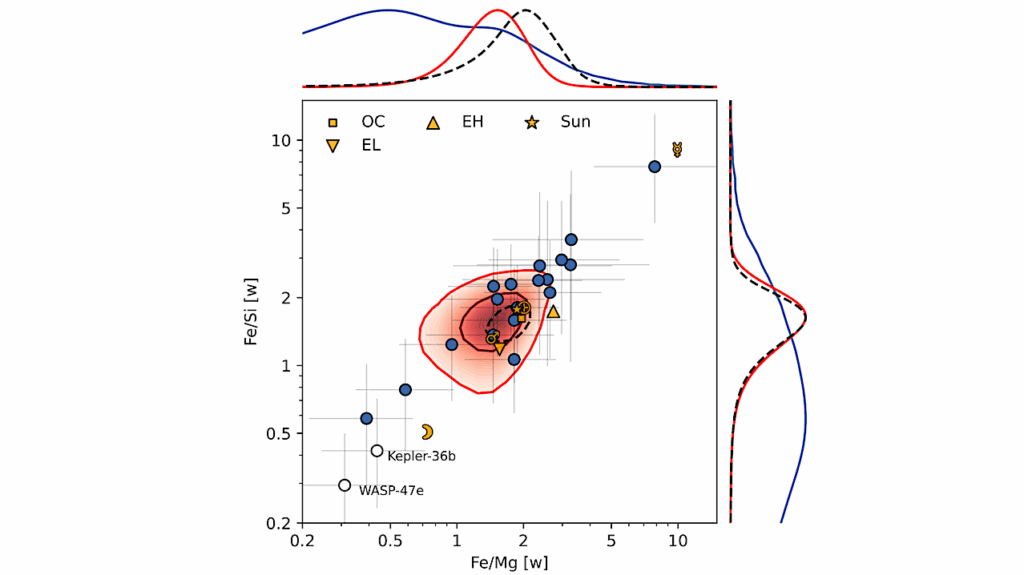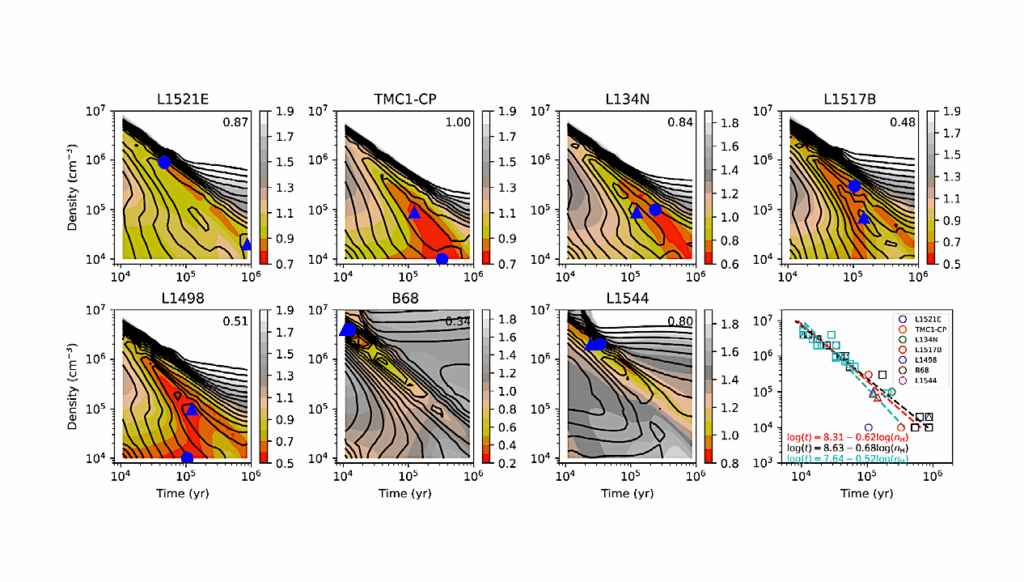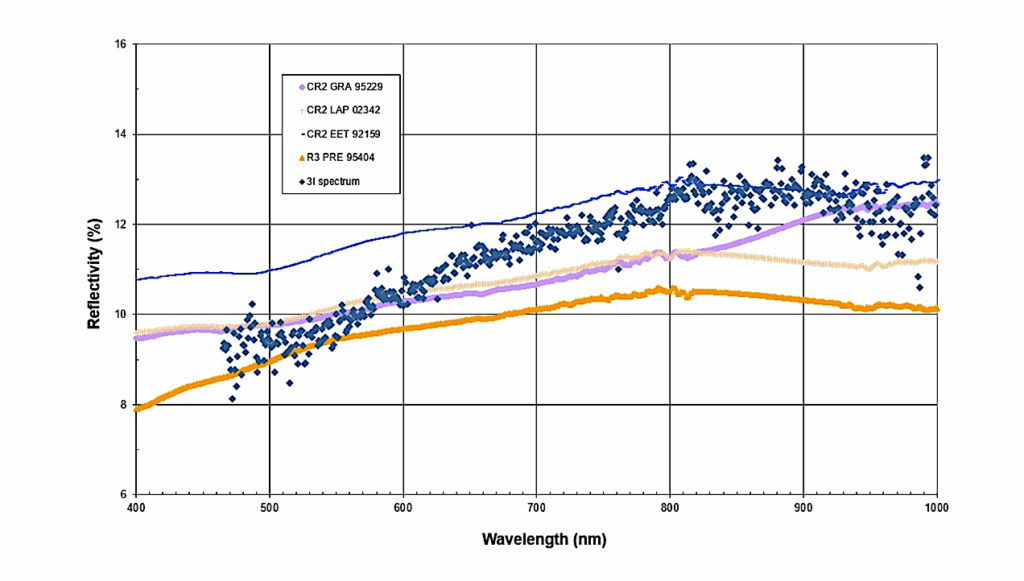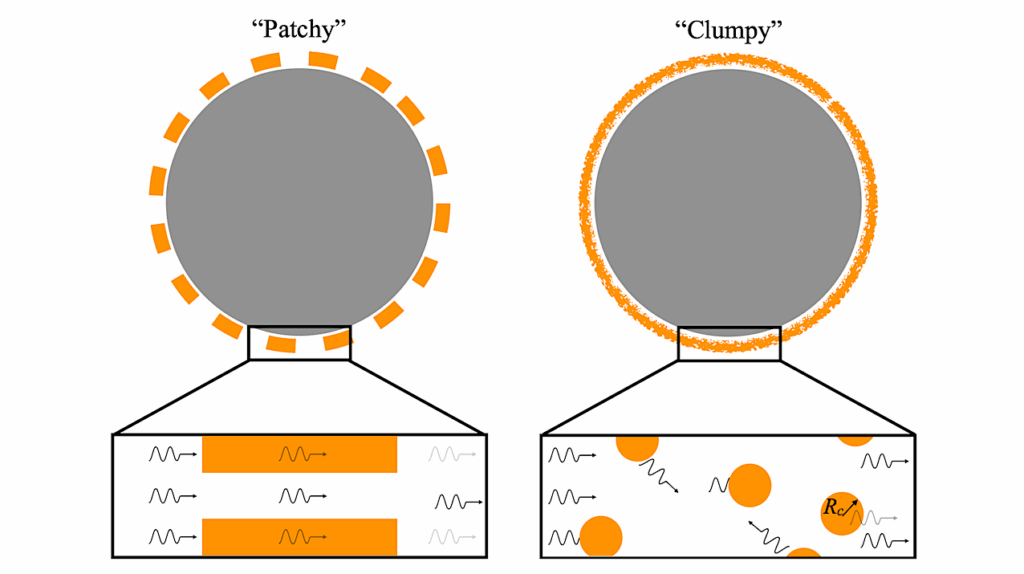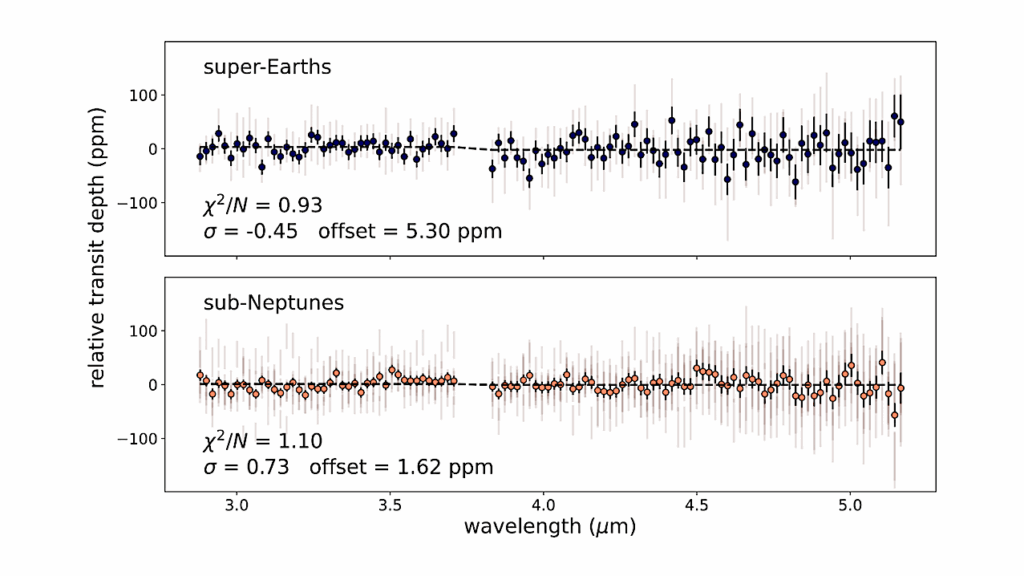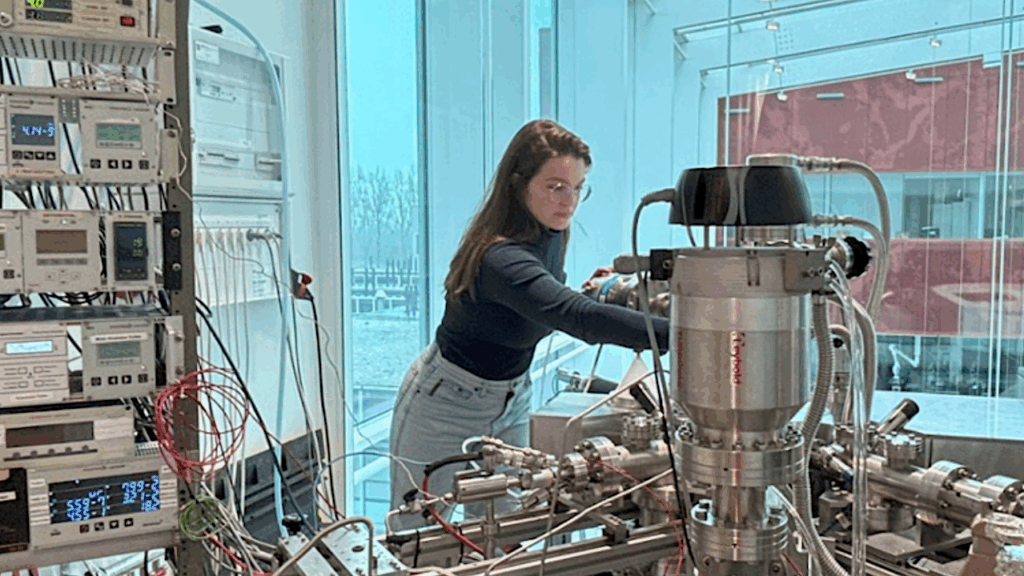TOI-1685 b is a Hot Rocky Super-Earth: Updates to the Stellar and Planet Parameters of a Popular JWST Cycle 2 Target

We present an updated characterization of the TOI-1685 planetary system, which consists of a Pb = 0.69 day USP super-Earth planet orbiting a nearby (d = 37.6 pc) M2.5V star (TIC 28900646, 2MASS J04342248+4302148).
This planet was previously featured in two contemporaneous discovery papers, but the best-fit planet mass, radius, and bulk density values were discrepant allowing it to be interpreted either as a hot, bare rock or a 50% H2O / 50% MgSiO3 water world. TOI-1685 b will be observed in three independent JWST cycle two programs, two of which assume the planet is a water world while the third assumes that it is a hot rocky planet.
Here we include a refined stellar classification with a focus on addressing the host star’s metallicity, an updated planet radius measurement that includes two sectors of TESS data and multi-color photometry from a variety of ground-based facilities, and a more accurate dynamical mass measurement from a combined CARMENES, IRD, and MAROONX radial velocity data set.
We find that the star is very metal-rich ([Fe/H] ≃ +0.3) and that the planet is systematically smaller, lower mass, and higher density than initially reported, with new best-fit parameters of Rpl= 1.468 +0.050 −0.051 R⊕ and Mpl= 3.03+0.33 −0.32 M⊕. These results fall in between the previously derived values and suggest that TOI-1685 b is a hot, rocky, planet with an Earth-like density (ρpl= 5.3 ± 0.8 g cm−3 , or 0.96 ρ⊕), high equilibrium temperature (Teq = 1062 ± 27 K) and negligible volatiles, rather than a water world.
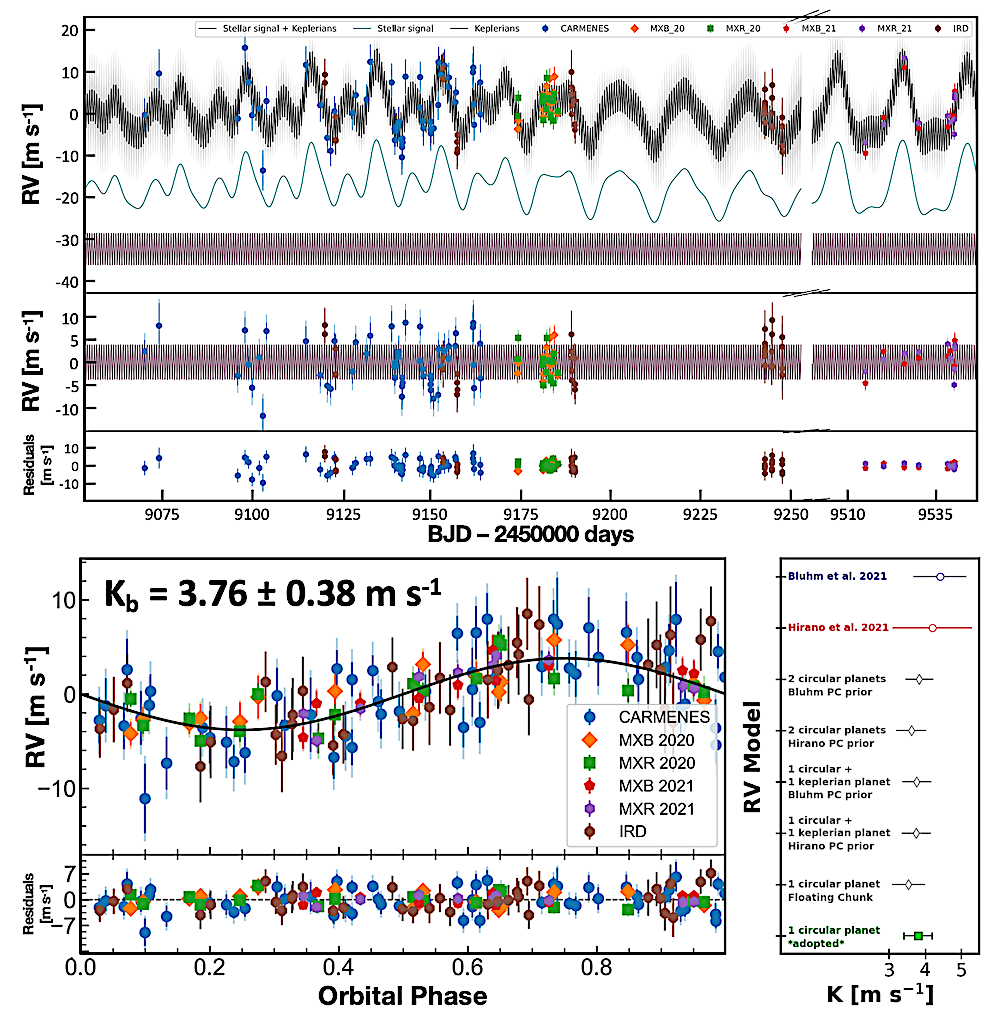
Top: Time series RV data used in our adopted 1 circular planet + 1D quasi-periodic Gaussian Process fit, color coded by instrument. The MAROON-X data sets are broken up between the 2020 and 2021 semesters due to interventions in the spectrograph that introduce a zero-point offset. The purple line is the model of planet b’s orbit, the teal line is the GP representing the star’s contribution to the RV signal, and the black line is the planet’s orbit combined with the GP. The light-shaded areas show the GP model’s one- and two-sigma credible intervals. Bottom Left: RV data phase folded to the bestfit period of planet b. Bottom Right: Comparison of the best-fit semi-amplitudes from the published literature (blue and red points, depicting the results from B21 and H21, respectively) and the different pyaneti models we tested on the combined IRD + CARMENES + MAROON-X data set. Models with two planets always assume a circular orbit for planet b, and then either a circular (‘cp’) or Keplerian (‘kp’) orbit for the outer planet. We place Gaussian priors on the outer planet candidate’s period and transit epoch using the reported planet candidate parameters from B21 and H21. All models produce consistent results for the semi-amplitude of planet b, but the preferred solution according to comparisons of the Akaike Information Criteria is a single circular planet plus a 1D quasi-periodic GP, which is depicted in green. — astro-ph.SR
Jennifer A. Burt, Matthew J. Hooton, Eric E. Mamajek, Oscar Barragán, Sarah C. Millholland, Tyler R. Fairnington, Chloe Fisher, Samuel P. Halverson, Chelsea X. Huang, Madison Brady, Andreas Seifahrt, Eric Gaidos, Rafael Luque, David Kasper, Jacob L. Bean
Comments: 20 pages, 9 Figures, accepted for publication in ApJL. Datasets and software available via Zenodo and GitHub links found in the paper
Subjects: Earth and Planetary Astrophysics (astro-ph.EP); Solar and Stellar Astrophysics (astro-ph.SR)
Cite as: arXiv:2405.14895 [astro-ph.EP] (or arXiv:2405.14895v1 [astro-ph.EP] for this version)
Submission history
From: Jennifer Burt
[v1] Tue, 21 May 2024 18:00:20 UTC (7,671 KB)
https://arxiv.org/abs/2405.14895
Astrobiology


